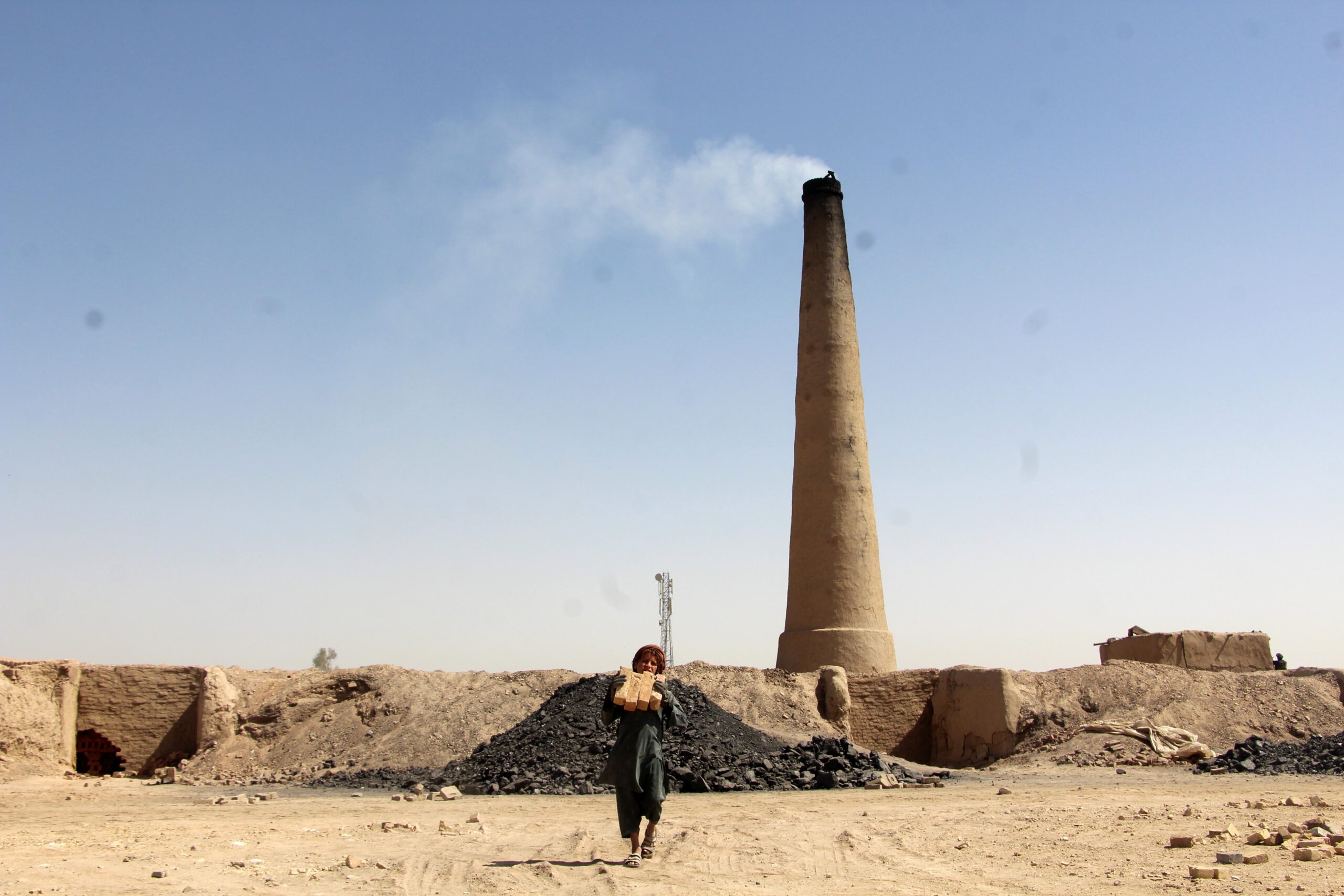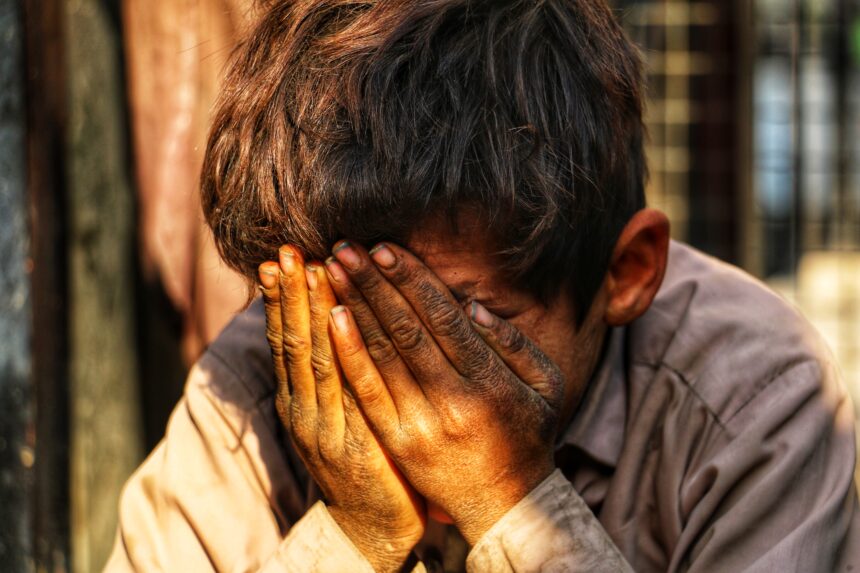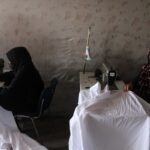Zahra squats beside a blackened stove, turning ears of corn over smoldering coals. Smoke stings her eyes, but she doesn’t flinch. “If I sell enough,” she says, “maybe we’ll have dinner.”
She is eleven. Her small hands work with practiced speed, her face streaked with soot, not ink. School, once a place she ran to, was taken from her after sixth grade. “We weren’t allowed anymore,” she says, softly. “Now I sit here all day. I want to go back. But first, we need to eat.”
In the heart of Taliban-ruled Afghanistan, Zahra’s story is no longer unusual — it is the norm.
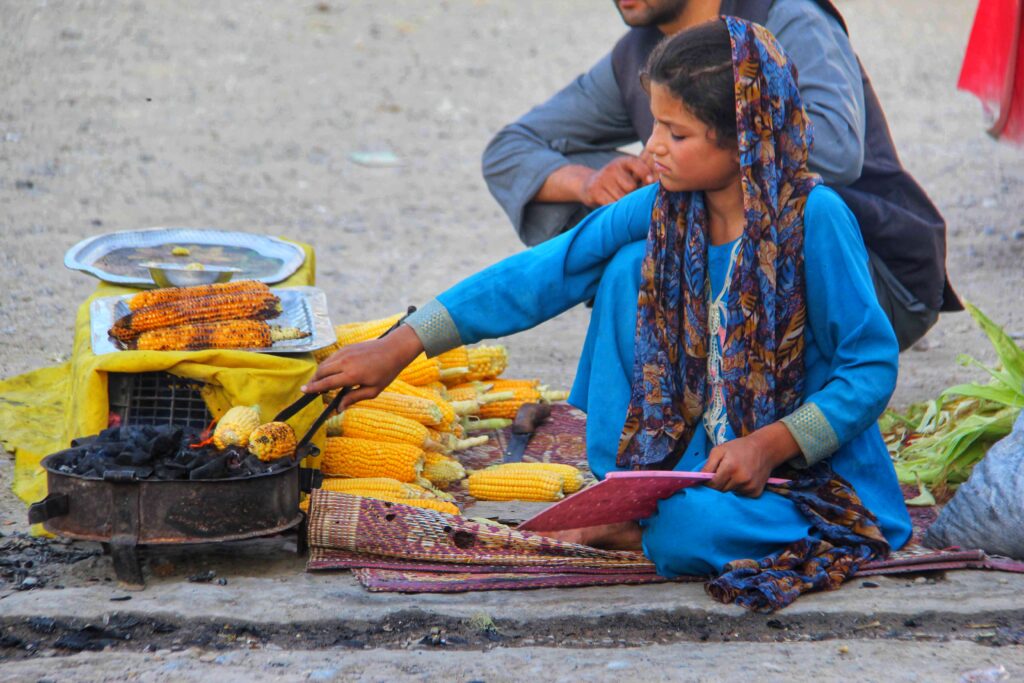
Childhoods Replaced by Labour
Since the Taliban’s return to power in August 2021, the collapse of women’s rights, economic lifelines, and access to education has created a humanitarian crisis — one that falls hardest on the smallest shoulders.
Across Afghanistan, children are now the invisible workforce of a broken nation: selling food on roadsides, cleaning engine parts in suffocating garages, and carrying heavy bricks in kiln yards. Many are under ten. All should be in school.
In dusty alleyways not far from Zahra’s corn stove, Arezoo, 13, does the same work — while also caring for her baby sister. “I liked math,” she says, without looking up. “Now I sell corn. My sister plays in the dirt behind me. This is our life.”
For Wali, 12, the day starts early in a mechanic shop. He hammers iron with tools too large for his hands. “If I don’t work, we don’t eat,” he says. His brow furrows with adult focus. He has not opened a schoolbook in three years.
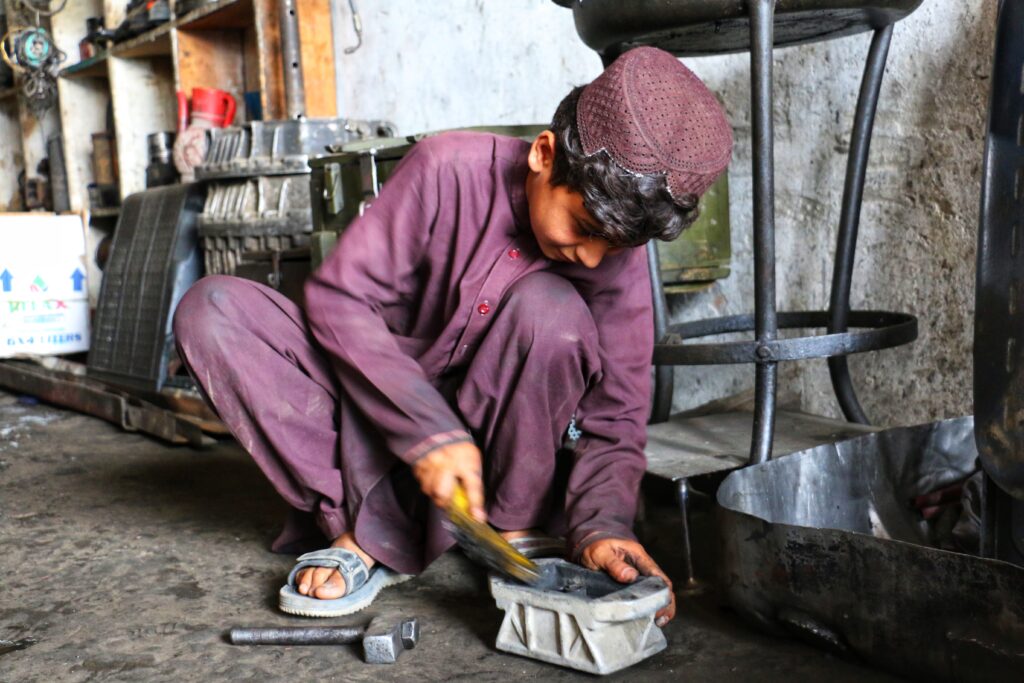
A System Built on Denial
Child labour in Afghanistan is not simply a side effect of poverty. It is a systemic consequence of repression.
According to UNICEF and ILO estimates, 19% of Afghan children are now engaged in child labour. For girls, the rate is rapidly rising. Since schools for girls beyond sixth grade were shut down, many families — already stripped of female income due to employment bans — rely on their daughters to contribute however they can.
As women vanish from the workforce, children take their place. The Taliban’s edicts do not just exclude half the population from public life — they force the other half into premature adulthood.
And while Afghan children bear the physical toll of this crisis, their hopes and futures are also crumbling.
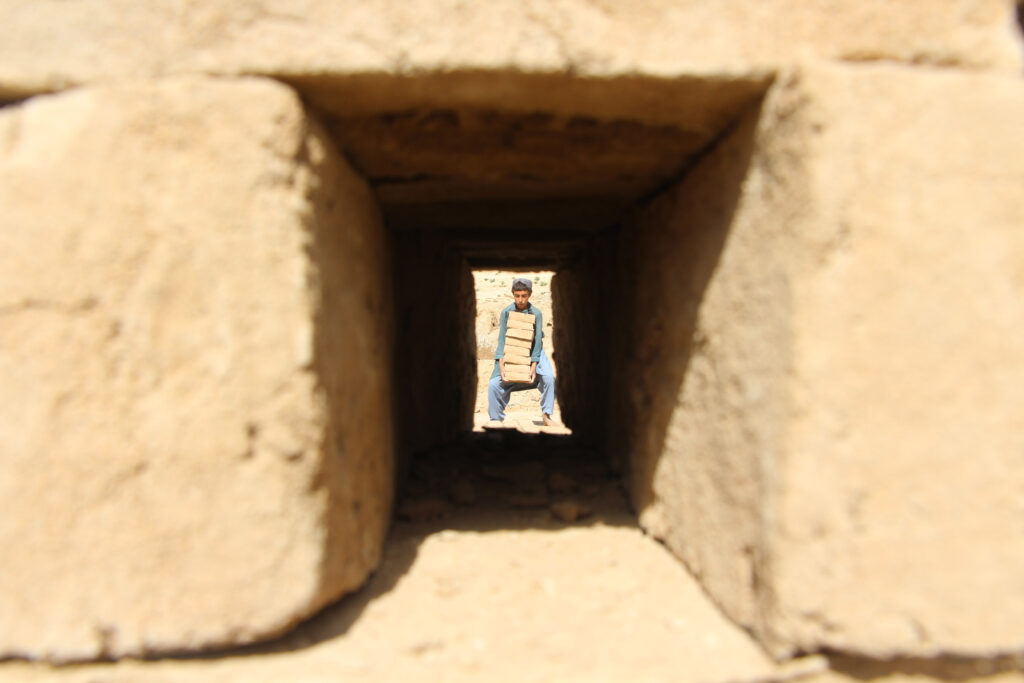
“Sometimes I Dream… But Dreams Are Not for People Like Us.”
Farid is seven. Each day he walks to the market with a borrowed glass scale and offers to weigh people for five Afghanis — about six cents. His goal is simple: earn enough for bread.
“I wanted to be a doctor,” he says shyly. “But I have to help my mother.”
His father was a farmer. Drought took the land. Then came the regime, the joblessness, the hunger.
His smile is fragile. It breaks across his face like sunlight through cloud — brief, beautiful, and heartbreaking.
In another village, 9-year-old Ilyas and his brother Bilal, 7, carry wet bricks through a sunbaked kiln yard. Their father was injured in a kiln accident last winter. Now the boys carry his burden — and the family’s survival.
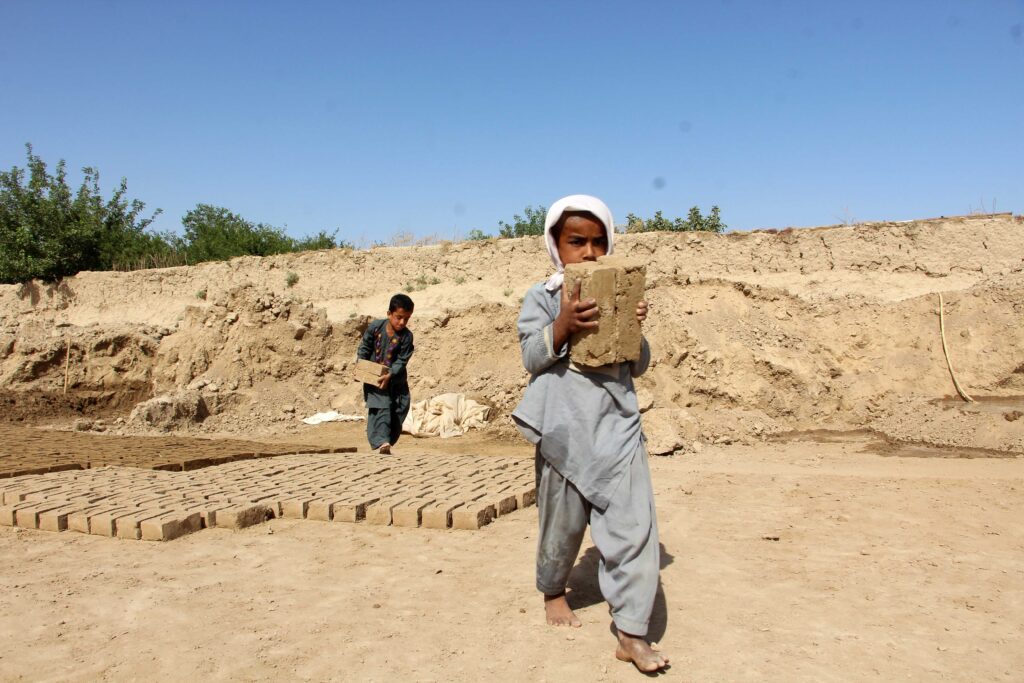
The Unseen Toll
These children are not just working. They are being robbed — of literacy, of childhood, of dreams.
Where once there were backpacks, now there are wheelbarrows filled with water cans. Where once there were desks and teachers, now there are stoves and tools and silence.
In Kandahar, brick kilns stretch for miles. Children push carts heavier than their weight. Girls scrub soot from their faces before going to bed beside the very bricks they laid. One boy, Noorullah, wears a delicate sky-blue tunic as he works. “It’s Eid clothes,” he says. “The only ones without holes.”
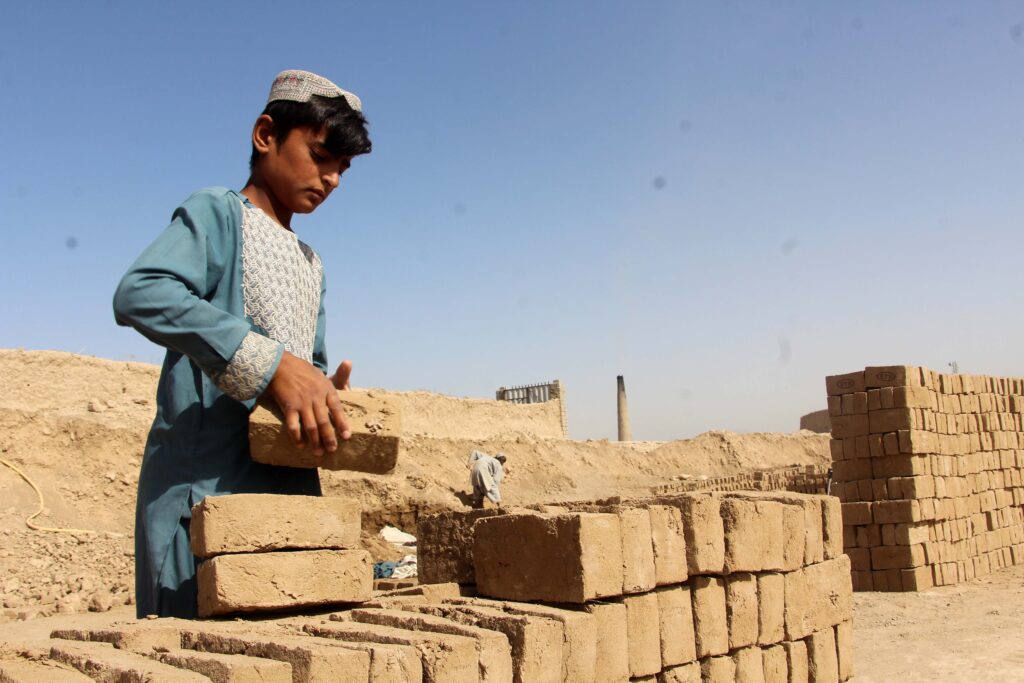
A Generation Buried Beneath Dust
This is no accidental crisis. It is not caused by drought alone, or sanctions, or aid withdrawal. It is caused by a deliberate policy of exclusion: of girls from education, of women from work, and of families from dignity.
“When girls are banned from learning and women are banned from earning,” writes Dr. Hidayat Greenfield in this report’s introduction, “then children are forced to work. The denial of rights becomes the engine of child labour.”
And as this denial deepens, the world looks away.
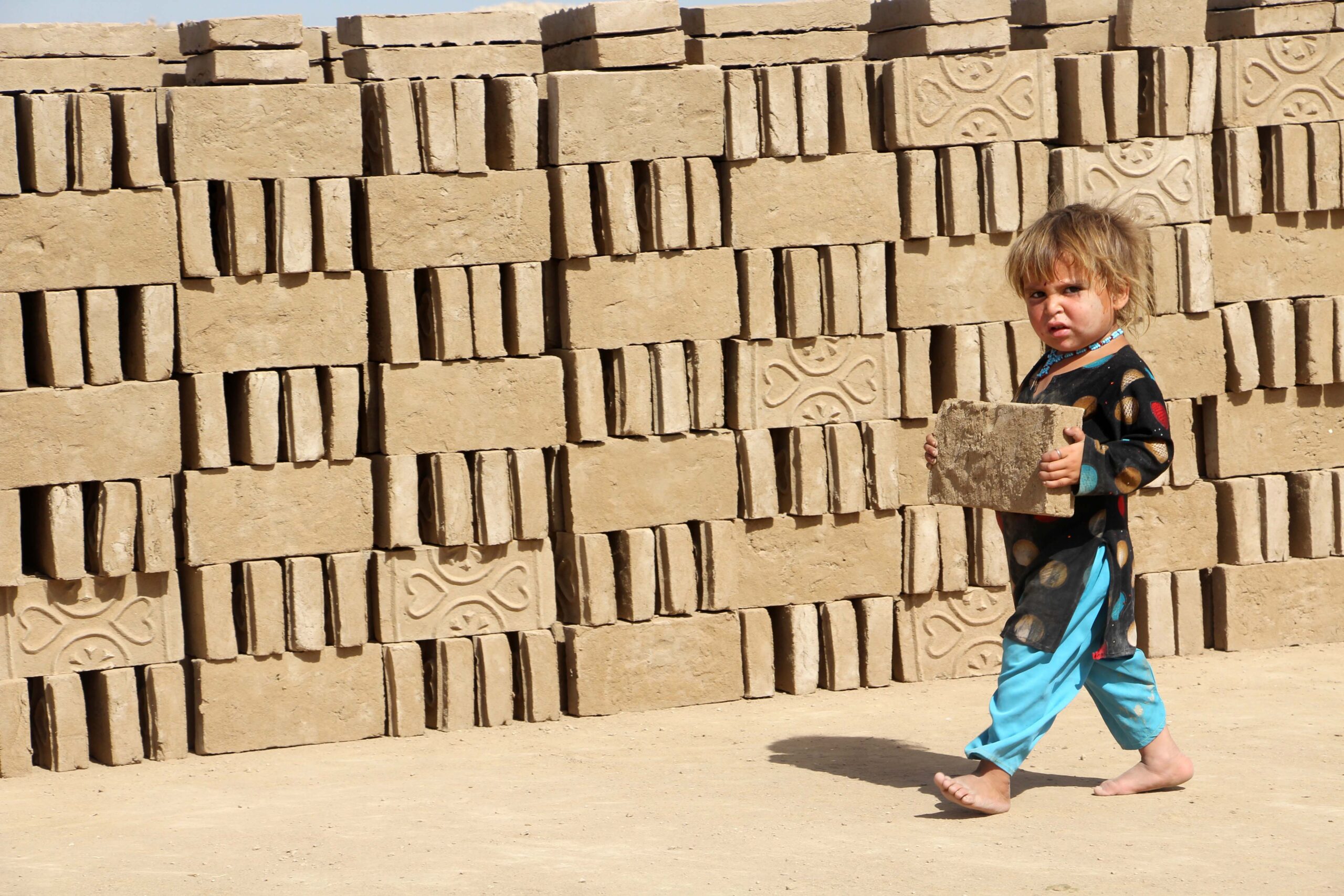
A Call to Conscience
Every brick lifted by a child is a weight the world has failed to carry. Every shoe polished, every scale balanced, every corn cob sold — is a measure not just of hunger, but of abandonment.
There is no greater moral failure than to let children grow up like this: heads bowed not in learning, but in labour.
Yet these children still speak of dreams. Zahra wants to go back to school. Arezoo wants to study math again. Farid wants to heal the sick. Wali wants to build machines, not just fix them.
They do not ask for pity. Only a chance.
